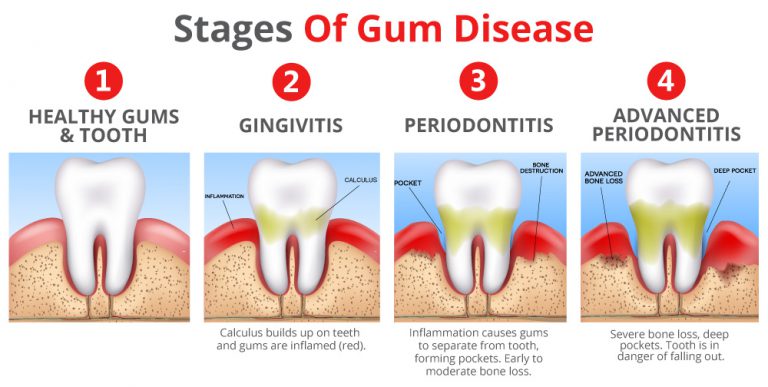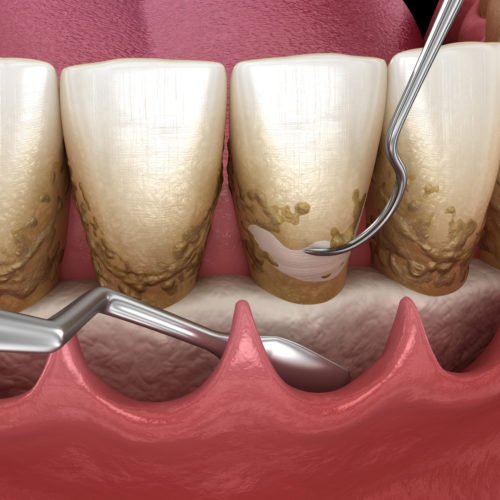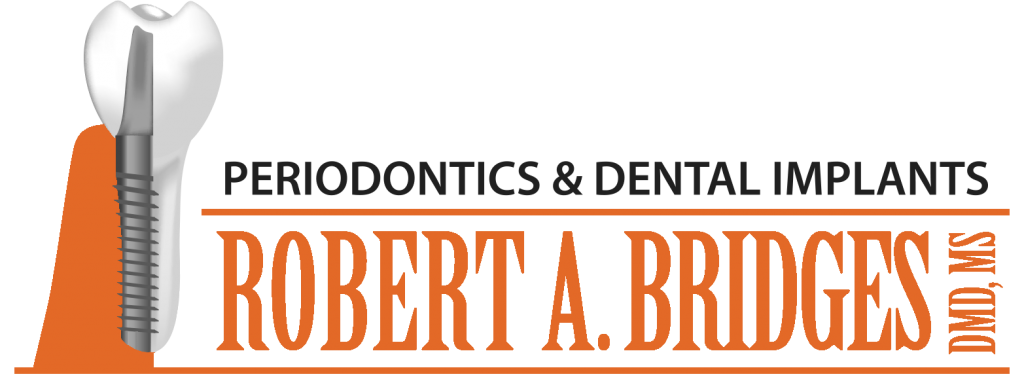Periodontal Disease & treatment
Periodontal Diseases & treatment

Periodontal diseases are infections of the gums which gradually destroy the support of your natural teeth. There are numerous disease entities requiring different treatment approaches. Dental plaque is the primary cause of gum disease in genetically susceptible individuals. Daily brushing and flossing will prevent most periodontal conditions.
Periodontal diseases can be accelerated by a number of different factors however it is ultimately caused by the bacteria found in dental plaque. If not carefully removed by daily brushing and flossing, plaque hardens into a rough, porous substance known as calculus (or tartar). Calculus creates a rough surface that collects more bacterial plaque.
Bacteria found in plaque produces toxins or poisons that irritate the gums, which may cause them to turn red, swell and bleed easily. If this irritation is prolonged, the gums separate from the teeth, causing pockets (spaces) to form. As periodontal diseases progress, the supporting gum tissue and bone that holds teeth in place deteriorate. If left untreated, this leads to tooth loss.
The best way to prevent gum disease is effective daily brushing and flossing as well as regular professional examinations and cleanings. Unfortunately, even with the most diligent home dental care, people still can develop some form of periodontal disease. Once this disease starts, professional intervention is necessary to prevent its progress.
Other important factors affecting the health of your gums include:
- Smoking
- Diabetes
- Stress
- Clenching & Grinding Teeth
- Medication
- Poor Nutrition

SCALING & ROOT PLANING
Even in severe cases of periodontal disease, non-surgical periodontal therapy often precedes surgical therapy. This is done to improve the overall tissue quality prior to surgery. In many cases, it also limits the areas requiring surgery.
Treatment methods depend upon the type of disease and how far the condition has progressed. The first step is usually a thorough cleaning that may include scaling to remove plaque and tartar deposits below the gum line. The roots may also be planed to create a smooth surface for the gum tissue to heal and reattach to the tooth. In some cases, the occlusion (bite) may require adjustment.
OSSEOUS SURGERY
When deep pockets between teeth and gums are present, it is difficult for Dr. Bridges to thoroughly remove plaque and tartar. Patients can seldom, if ever, keep these pockets clean and free of plaque. Consequently, surgery may be needed to restore periodontal health.
Guided Tissue Bone Regeneration
This surgical procedure “regenerates” the previously lost gum and bone tissue. Most techniques utilize membranes, which are inserted over the bone defects. Some of these membranes are bio-absorbable and some require removal. Other regenerative procedures involve the use of bioactive gels.

